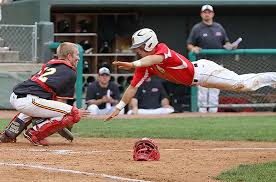- November 6, 2014
- Posted by: Dave Kurlan
- Category: Understanding the Sales Force

I miss baseball already. Although I can’t watch it right now, I still think about it. I look forward to next season when, together with my wife, we’ll watch our son strike out other kids, hit lots of home runs, and improve his baseball skills while playing close to 100 games! I don’t look forward to the seats…
I’ve written plenty about the similarity betwen baseball and selling, but today I’m writing about the similarity between baseball and sales leadership. If you’re not a baseball person, you might not see the same things that I see, most of which can be applied to leading a sales force. For example,
there are five levels of professional baseball: a short season A team, a full-season A team, and then, as the player becomes adjusted and ready for the two higher levels in the minor leagues; AA and AAA. Then, if and when he’s good enough, he’ll be promoted to the Majors.
Most people can see the differences in the caliber of play when comparing a Little League game to a high school game, or a college game to a professional game. Most people aren’t able to recognize the differences between each of the 5 professional levels. They may be watching a minor league game, but it sure looks like professional baseball to them – without the 35,000 people in the stands rooting for their team. Pitchers make the pitches, hitters hit the ball, run the bases, and everyone make the plays. It is professional baseball, but in the minor leagues, pitchers don’t command their secondary pitches. While they already have a major league-ready fast ball, they have not yet mastered the ability to throw their curve ball, change up or slider to the exact spot it needs to go. Hitters in the minor leagues are able to hit a fastball with authority, but may not be able to recognize, adjust to, and hammer breaking pitches.
The exact same difference exists between sales experts like me and sales leaders like you.
Most sales leaders can easily differentiate between salespeople who are awful and those who are not awful. They have difficulty differentiating one awful salesperson from another. If you’re asking yourself why I’m placing this in the context of awful, rather than good, it’s because 74% of the sales population is awful!
Based on Objective Management Group’s (OMG) statistics, a sales force of 10 would typically have:
- 0 elite salespeople who make up the top 6%,
- 2 good salespeople who make up the top 26%, and
- 8 salespeople who are awful, making up the remaining 74%.
A typical sales leader looks at the sales force and can differentiate between the 2 good and 8 bad, but isn’t able to explain why. Sure, they can point to sales numbers and activity, but those aren’t reasons, as much as differing results.
It’s very difficult to coach someone up when you don’t know the cause of their ineffectiveness.
For example, let’s take 3 awful salespeople who are each underperforming at a company we recently evaluated:
- Bob has a full pipeline, but despite all of the opportunities, his win-rate is pathetic.
- Mary has a nearly empty pipeline, but closes most of the opportunities she does uncover.
- Bill has a poor pipeline – half way between Bob and Mary – but most opportunities get stuck and don’t move through to closure.
You can easily determine that Bob is a successful hunter, but an awful closer.
You can easily determine that Mary is a successful closer, but an awful hunter.
You can easily determine that Bill isn’t very good at anything.
Now let’s pretend that they are your salespeople. That shouldn’t be a stretch because you probably have 3 salespeople who look like this.
Do you know why this is happening? Do you know how to figure out why it is happening? Do you know that a seminar on prospecting or closing won’t change anything? Do you know what is in their Sales DNA, their Will to Sell, or their Sales Skill Sets that are responsible for these outcomes? Do you know if they’re even trainable? Do you know if they’re really coachable? Do you know if you’re any good at developing salespeople with these mysterious issues?
Of course you don’t know. You’re not even supposed to know. If you did know, they would each have been either fixed (because you knew what to fix and how to fix it) or replaced (because you knew it couldn’t be fixed or you weren’t capable of fixing it). Right?

